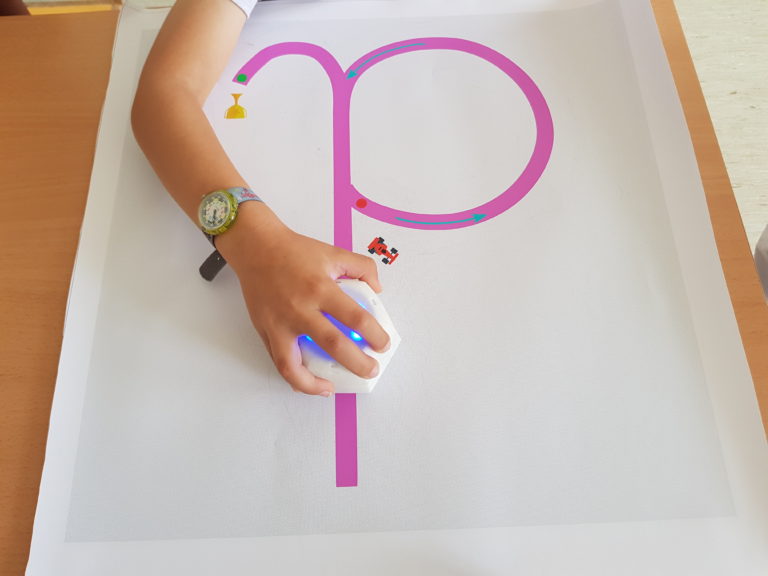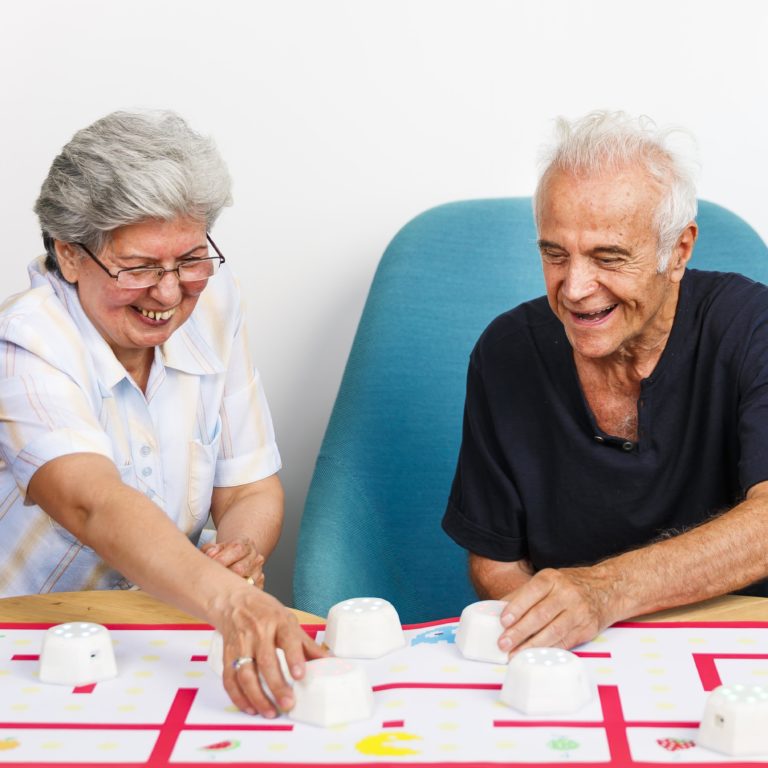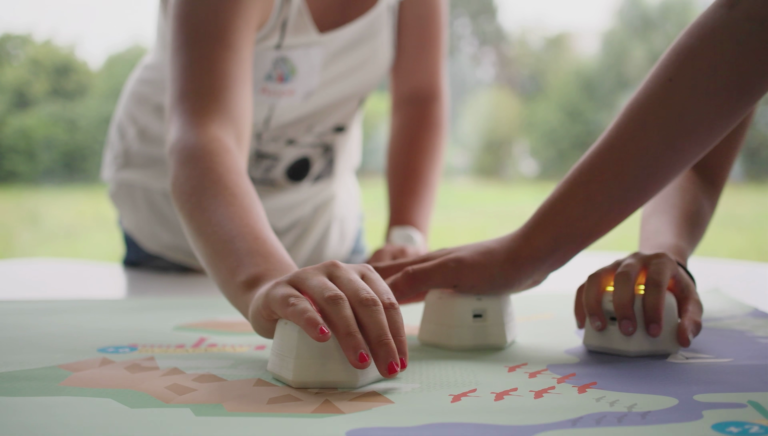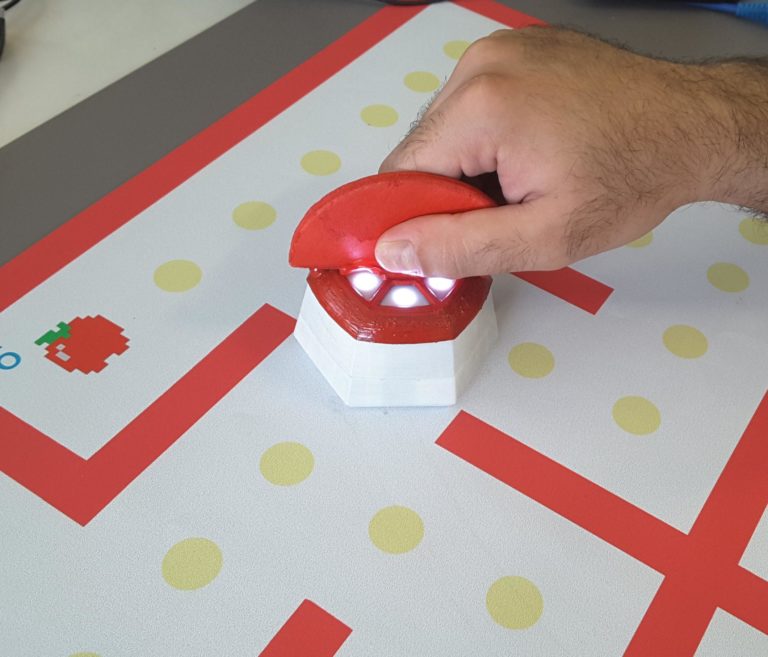Cellulo
The main goals of developing robots for education is to study how robots can improve the quality of education and give students a good basis in science and technology. To achieve these goals, in the first two phases on NCCR Robotics we developed Cellulo, which we envision to be the pencil of the future’s classroom.
Cellulo robots are swarm robots, each of them very simple and affordable, that reside on large paper sheets that contain the learning activities. The various sensors (camera, touch sensors) and interaction modalities (haptic, LEDs) that Cellulo robots are equipped with make them highly versatile. Depending on the activity, Cellulo robots can play any role required: the embodiment of a game character, a planet in a solar system, a tool to interact with an activity, a hot air balloon, one part in a fraction, and many other possibilities.
A key requirement for any learning activity is that the tools involved are easy to interact with. For this reason, we explored various interaction modalities for Cellulo (individually or, more importantly, as a swarm), assessing their usability and effectiveness with respect to the learning goals.
Moreover, feedback from teachers is crucial to ensure that Cellulo achieves its ambitious goals as an aide in teaching contexts, with minimum impact on the orchestration load. To this end, we organized training events for teachers to get familiar with Cellulo, discover its functionalities and exploit it in their daily activities, with a specific focus on activities aimed at teaching computational thinking skills.




Related publications
- Khodr, S. Kianzad, W. Johal, A. Kothiyal, B. Bruno and P. Dillenbourg, “AlloHaptic: Robot-Mediated Haptic Collaboration for Learning Linear Functions”, 29th IEEE Int. Conf. on Robot and Human Interactive Communication (RO-MAN), 2020, pp. 1–8.
- Khodr, U. Ramage, A. Guneysu Özgür, B. Bruno and P. Dillenbourg, “Being Part of the Swarm: Experiencing Human-Swarm Interaction with VR and Tangible Robots”, ACM Symposium on Spatial User Interaction (SUI), 2020.
- Guneysu Özgür, A. Özgür, T. Asselborn, W. Johal, E. Yadollahi, B. Bruno, M. Skeweres and P. Dillenbourg, “Iterative Design and Evaluation of a Tangible Robot-Assisted Handwriting Activity for Special Education”, Frontiers in Robotics and AI, vol. 7, pp. 1–29, March 2020.
- Guneysu Özgür, B. Bruno, T. Asselborn and P. Dillenbourg, “Can Tangible Robots Support Children in Learning Handwriting?”, Educational Technology, vol. 120, pp. 20–21, Jan. 2020.
- Neto, W. Johal, M. Couto, H. Nicolau, A. Paiva, and A. Guneysu, “Using tabletop robots to promote inclusive classroom experiences”, ACM Interaction Design and Children Conference (IDC), 2020, pp. 281–292.
- Guneysu Özgür, M.J. Wessel, J.K. Olsen, W. Johal, A. Özgür, F.C. Hummel and P. Dillenbourg, “Gamified Motor Training with Tangible Robots in Older Adults: A Feasibility Study and Comparison with the Young”, Frontiers in Ageing Neuroscience, vol. 12.